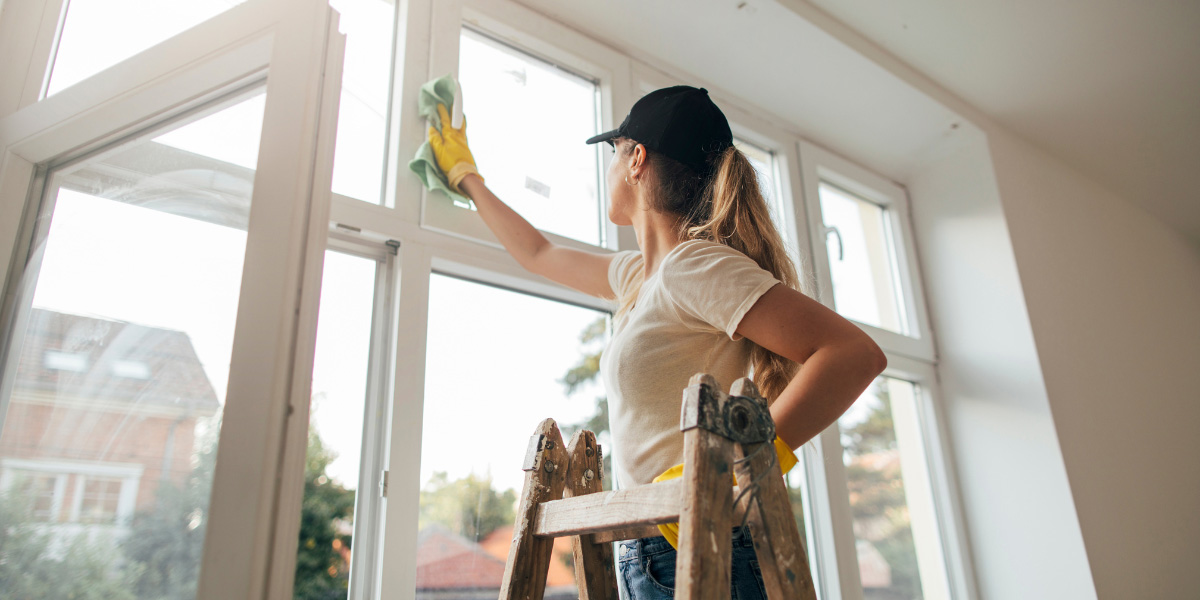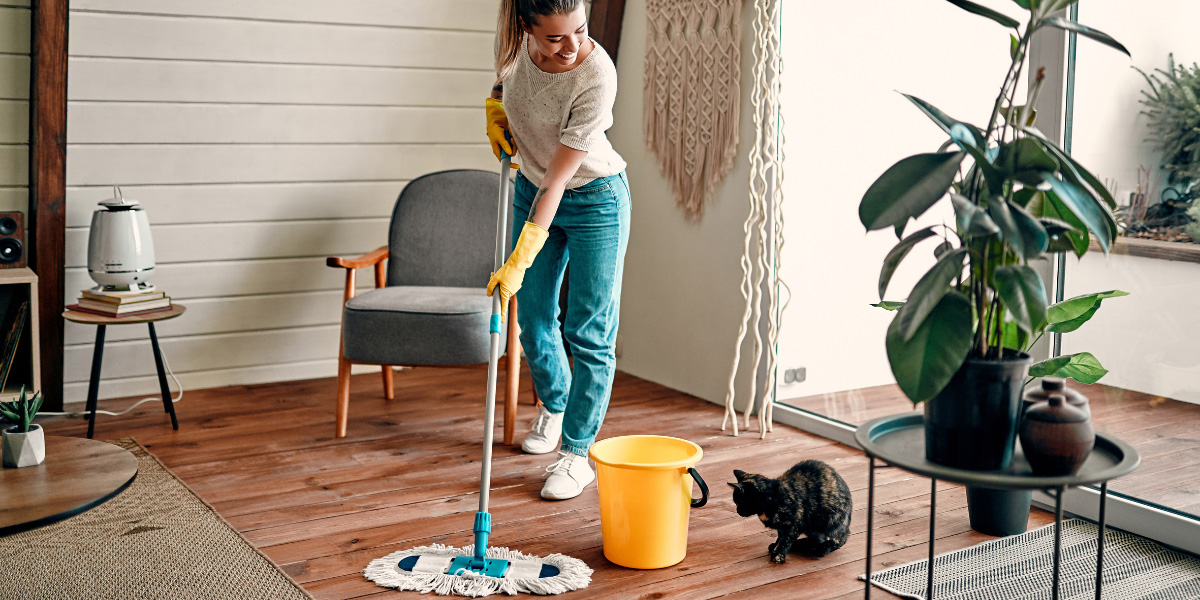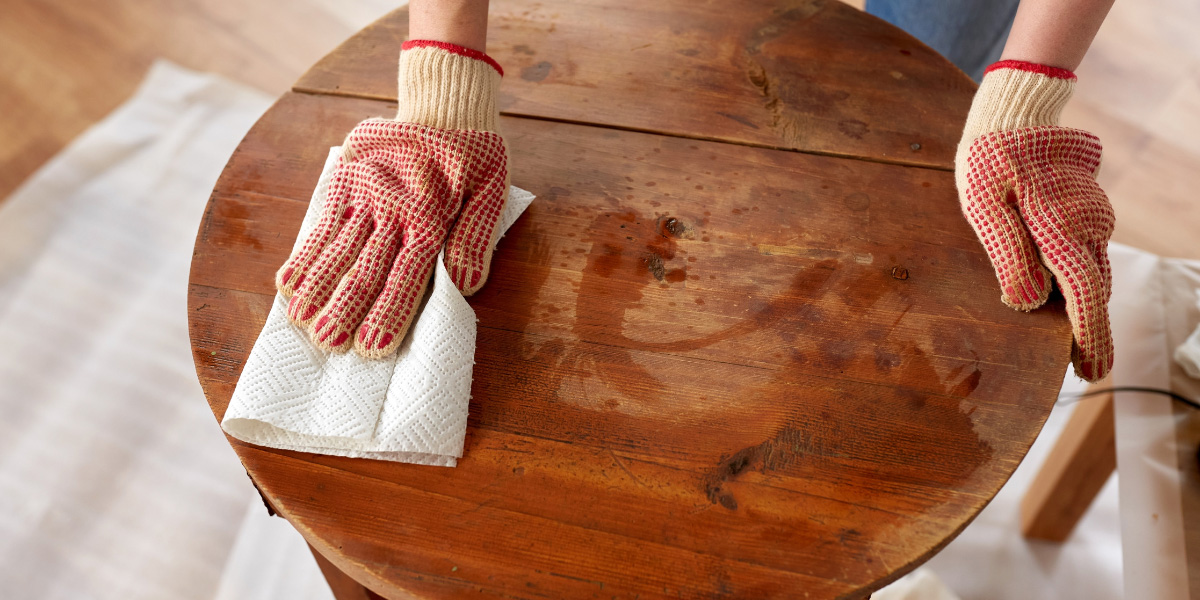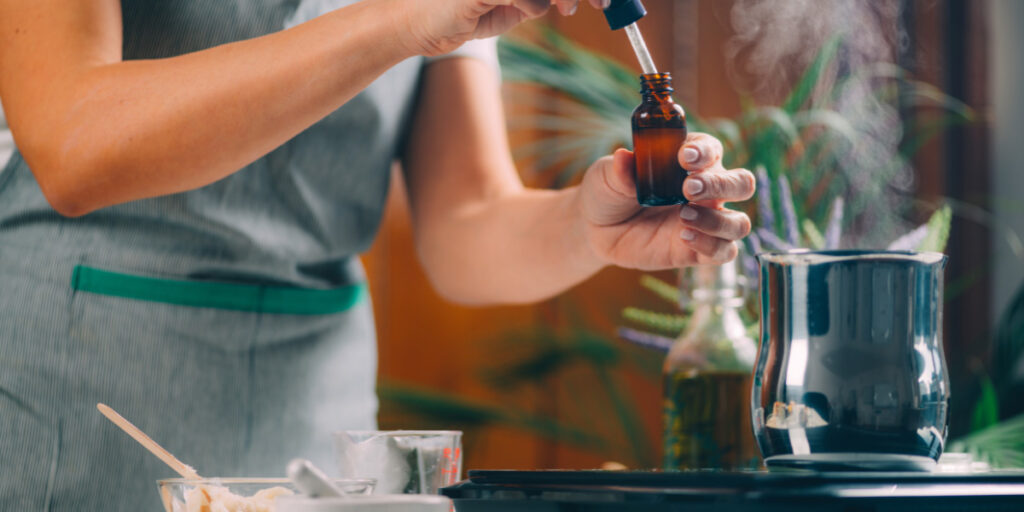Cleaning
10 Homemade Cleaning Recipes for a Sparkling, Chemical-Free Home
Creating your own homemade cleaning supplies is not just an activity, it’s a transformative journey towards healthier living and environmental responsibility.
When you take control, you curate what goes into your cleaning solutions, eradicating harsh chemicals and embracing a more natural, green approach. The result? Powerful, eco-friendly cleaning agents that are gentle on you, your family, and our planet, yet tough on dirt and grime.
Today we dive into the world of suds and sprays, and learn how to make homemade cleaner solutions that’ll leave your home sparkly clean and smelling fresh.
The Power of DIY: Why Make Your Own Cleaning Supplies?
Before we dive into the homemade cleaning recipes, let’s discuss why creating your own cleaning supplies can be a game-changer. Going the DIY route for your cleaning needs offers several advantages that far outweigh the convenience of store-bought products:
- Cost-Effective: The majority of DIY cleaning recipes feature everyday household items like vinegar, baking soda, and essential oils. These are inexpensive and readily available, translating into significant cost savings over time.
- Health and Safety: Many commercial cleaning products are laden with chemicals that can cause allergies, skin irritation, and other health concerns. With homemade cleaning solutions, you control the ingredients, eliminating harmful substances and reducing health risks.
- Eco-Friendly: DIY cleaning solutions reduce the demand for commercially produced products, which often come packaged in single-use plastics. By reusing spray bottles and containers, you contribute to reducing waste and plastic pollution.
- Customizable: Making your own cleaning products lets you customise the scent, strength, and amount you produce. Love the smell of lavender? Want a stronger solution for those stubborn stains? You call the shots.
The Basic Arsenal: What You’ll Need for Your DIY Cleaning Supplies

With just a few versatile, natural ingredients, you can create an impressive array of homemadecleaning supplies to cover every nook and cranny of your home. Let’s assemble the key components for your DIY cleaning journey:
- White Vinegar: This pantry staple is a superhero in homemade cleaning supplies. Thanks to its acidity, white vinegar serves as a natural disinfectant, effectively killing most forms of mould, bacteria, and germs. It’s a must-have for your homemade cleaning spray recipes, and it makes an excellent base for a DIY floor cleaner for mopping.
- Baking Soda: Meet your new scouring champion. Baking soda, with its mild alkaline properties, excels in breaking down grease and dirt. Its gentle yet abrasive nature makes it perfect for tasks that require a bit more elbow grease. Combined with vinegar, it creates a potent mix to tackle even the most stubborn grime.
- Essential Oils: These potent plant extracts do more than just lend a pleasant aroma to your homemade cleaning recipes. Many essential oils like tea tree, eucalyptus, and lemon have antimicrobial properties, making them a beneficial addition to your cleaning supplies. They can freshen your home, boost the cleaning power of your homemade solutions, and even provide minor pest-repelling benefits.
- Castile Soap: Gentle on your skin and tough on dirt, liquid Castile soap is a versatile, vegetable-based product that can be used in everything from homemade cleaning spray to DIY floor cleaner for mopping. It’s completely biodegradable and gets its cleaning power from saponified oils, making it a green and effective option for any cleaning task.
- Spray Bottles: You can’t overlook the importance of having a quality spray bottle on hand. It will hold your homemade cleaning sprays, and with its help, you can easily distribute your DIY cleaners on surfaces that need a good scrub or shine.
- Cleaning Brushes: Including a good set of cleaning brushes in your cleaning arsenal is an absolute must. For instance, the Grout Brush Set available at Mountain Store 360 is a comprehensive 4-in-1 solution, perfect for deep cleaning of grouts, tiles, and other
hard-to-reach areas.
Get Crafty with 10 Homemade Cleaning Supplies
It’s time to reveal your creative side and get crafty with these 10 homemade cleaning supplies!
#10 All-Purpose Homemade Cleaning Spray
There’s no better place to start than with a versatile, all-situations cleaner. Our first stop on this DIY journey is a homemade all-purpose cleaner that uses vinegar’s stain-busting, odour-neutralising power, combined with antimicrobial essential oils for a germ-free home.
What You’ll Need:
- Empty spray bottle
- Small funnel
- 1/2 cup (142ml) white vinegar
- 2 tablespoons baking soda
- Tea tree essential oil
- Eucalyptus essential oil
Let’s Get Mixing:
- To begin, take off the top of the spray bottle. Then, insert a small funnel into the opening and add 1/2 cup (142ml) of white vinegar.
- Add 2 tablespoons of baking soda. Sit back, watch the fizz, and wait until it subsides.
- Stir in 10 drops each of tea tree and eucalyptus essential oil for that germ-fighting power and fresh scent.
- Top up the bottle with water, secure the spray top, give it a good shake, and it’s ready for action!
This concoction is perfect for countertops, tables, and most surfaces. Remember to shake well before each use for a homogeneous mix. Pair it with the All Purpose Cloths Multipack, which are disposable cloths designed to clean surfaces effectively. These J Cloths style blue cloths offer convenience and versatility for use in the kitchen, bathroom, and windows.
#9 Simple Soft Scrub Cleaner
Next up, we ditch those industrial-strength soft scrub cleaners full of unpronounceable chemicals. Instead, let’s make a homemade cleaner that’s just as effective at erasing hard mineral deposits and soap scum. We recommend using it in your bathroom for a sparkle you can be proud of.
What You’ll Need:
- Empty dish soap bottle
- Small funnel
- 1 1/2 cup (426ml) baking soda
- 1/2 cup (142ml) liquid Castile soap
- 2 tablespoons white vinegar
- 2 tablespoons water
- Tea tree essential oil
Let’s Get Mixing:
- Thoroughly clean out an empty dish soap bottle, remove the cap, and insert a small funnel.
- Pour in the baking soda, liquid castile soap, white vinegar, and water.
- Let the foam settle, replace the cap, and shake the mixture vigorously for 2 minutes.
- Squeeze onto your surfaces and scrub away with a damp cloth or brush.
Your bathroom surfaces will thank you! And if you need something to help with the scrubbing, consider using the SonicScrubber. It’s a powerful tool that effortlessly tackles grime and dirt in your bathroom. With its high-power motor and adjustable oscillations, the SonicScrubber Household combi pack delivers precise and thorough cleaning results.
#8 Natural Toilet Bowl Cleaner
Chlorine bleach is often the go-to for toilet cleaners, but we have a pet and child-safe alternative that still packs a punch. This cleaner uses the natural cleaning power of castile soap and baking soda.
What You’ll Need:
- Large squirt bottle
- Small funnel
- 1/3 cup (94ml) liquid Castile soap
- 2 cups (570ml) water
- 2 tablespoons baking soda
- Lemon essential oil
- Eucalyptus essential oil
- Lavender essential oil
Let’s Get Mixing:
- Start by taking the top off a large squirt bottle and placing a small funnel into the opening.
- Pour in the liquid Castile soap, water, and baking soda. Wait for any resultant foaming to subside.
- To create your blend, mix in 5 drops of lemon, eucalyptus, and lavender essential oils each. These oils have antimicrobial properties and leave a fresh, clean scent behind.
- Screw the cap back on the squirt bottle, give it a hearty shake, and voila, your homemade, eco-friendly toilet bowl cleaner is ready for action!
Say goodbye to toxic cleaners and hello to a natural, effective solution that won’t harm your family or pets. The best part? It leaves your toilet bowl sparkling clean and smelling great, especially when paired with the XUXRUS Silicone Toilet Brush with Quick Drying Holder Set. The non-slip silicone handle and anti-drip base of the brush ensure efficient cleaning, while the quick drying feature prevents unpleasant odours and water stains on your bathroom floor.
#7 Homemade Window Cleaner

Our next recipe is for those smudgy windows that seem to collect fingerprints and dust like a magnet. This homemade window cleaner uses vinegar and cornstarch to buff away dirt, leaving your windows sparkling and streak-free.
What You’ll Need:
- Empty spray bottle
- Small funnel
- 1/2 cup (142ml) white vinegar
- 1 tablespoon cornstarch
- 2 cups (570ml) water
- Lemon essential oil
- Grapefruit essential oil
Let’s Get Mixing:
- Mix white vinegar, cornstarch, and water in a spray bottle using a funnel.
- Add 5 drops each of lemon and grapefruit essential oils for a fresh, citrusy scent.
- Replace the spray top, give the bottle a good shake to mix all the ingredients, and your homemade window cleaner is ready!
To make the process even easier, consider using the MR.SIGA 16 oz Plastic Spray Bottles for Cleaning Solutions. This pack of 3 commercial-grade refillable spray bottles is made from HDPE plastic and features measurements and an adjustable leak-proof nozzle.
#6 DIY Floor Cleaner for Mopping

The floors take a lot of daily abuse and deserve a cleaner that’s up to the task. This DIY floor cleaner for mopping is easy to make and leaves your floors looking pristine and smelling great.
What You’ll Need:
- Large container or bucket
- 1 cup (285ml) white vinegar/li>
- 1 tablespoon liquid Castile soap
- 10 drops of peppermint essential oil
- Warm water
The Vileda Turbo Microfibre Mop and Bucket Set, complete with an extra 2-in-1 head replacement, makes for a perfect addition to the already potent DIY floor cleaner for mopping. The set comes in an attractive red shade with 1x mop, 1x bucket, and 1x refill.
Let’s Get Mixing:
- In a large container or bucket, mix 1 cup (285ml) of white vinegar and 1 tablespoon of liquid Castile soap.
- Add 10 drops of peppermint essential oil. Not only does this give your homemade floor cleaner a fresh scent, but peppermint oil also has natural antibacterial properties.
- Top off with warm water and mix well.
- Your DIY floor cleaner for mopping is now ready! Just dunk your mop into the solution, wring it out well, and get mopping.
Whether you’re dealing with high-traffic areas or everyday spills, this homemade floor cleaner is a cost-effective solution that does the job without any harsh chemicals.
#5 Lemon-Fresh Dusting Spray

This homemade dusting spray leaves furniture clean, dust-free, and smelling fantastic. Plus, it has the added benefit of nourishing your wooden furniture, helping to keep it in top-notch condition.
What You’ll Need:
- Empty spray bottle
- Small funnel
- 1 cup water (285ml)
- 2 teaspoons olive oil
- 1/2 teaspoon lemon essential oil
- 1 tablespoon white vinegar
Let’s Get Mixing:
- Remove the top off an empty spray bottle and insert a small funnel.
- Pour in the water, olive oil, lemon essential oil, and white vinegar.
- Put the spray top back on, shake well, and your homemade dusting spray is ready to go!
- Spray a small amount onto a cloth and then wipe down your furniture. Always remember to shake well before each use.
In areas that are hard to reach, the JML Hurricane Spin Scrubber, a cordless power scrubber, can be your best friend. It has a powerful, battery-operated motor that spins the scrub brush at high speed, allowing it to tackle stubborn stains and grime. This nifty tool is perfect for cleaning those difficult corners in bathrooms or kitchens that are often overlooked.
#4 DIY Natural Air Freshener
Why buy synthetic air fresheners when you can create your own natural version at home? This homemade air freshener is simple to make, customisable to your favourite scents, and uses no harmful chemicals.
What You’ll Need:
- Empty spray bottle
- Small funnel
- 1 cup (285ml) water
- 2 tablespoons vodka or rubbing alcohol
- 10-20 drops of your favourite essential oils
Let’s Get Mixing:
- Take the top off an empty spray bottle and place a small funnel in the opening.v
- Pour in the water and vodka or rubbing alcohol. The alcohol helps the essential oils to disperse evenly and increases the longevity of the scent.
- Add your favourite essential oils.
For a calming atmosphere, use lavender. For a refreshing vibe, try lemon or peppermint. Secure the spray top back onto the bottle, give it a good shake, and your homemade air freshener is eady to spritz around the house!
#3 Non-Toxic Oven Cleaner
Commercial oven cleaners often contain caustic, harmful chemicals. But with this homemade version, you can tackle stubborn, baked-on grime while staying chemical-free.
What You’ll Need:
- Small bowl 1/2 cup (142ml) baking soda
- 2-3 tablespoons water
- White vinegar (in a spray bottle)
- Rubber gloves
Let’s Get Mixing:
- In a small bowl, mix the baking soda and water to form a thick paste.
- Don the rubber gloves and apply the paste all over the interior of your oven.
- Let it sit overnight or at least for 12 hours.
- The next day, spray vinegar over the paste, creating a foaming action that helps lift thegrime.
- Wipe clean with a damp cloth.
If you are cleaning a barbecue grill, use the Fyfjur BBQ Cleaning Wire Brush to scrub away any stubborn grime and residues. Its pointed tail wire and stainless steel curl grill brush makes it easy to clean even the most hard-to-reach areas of your grill. This addition will ensure that both your oven and grill are sparkling clean and free of harmful chemicals.
#2 DIY Microwave Cleaner
This easy homemade microwave cleaner not only removes food splatters and odours but also leaves your microwave smelling fresh and clean.
What You’ll Need:
- Microwave-safe bowl
- 1 cup of water (285ml)
- 2 tablespoons of white vinegar
- 1 teaspoon of lemon juice
Let’s Get Mixing:
- In a microwave-safe bowl, combine water, white vinegar, and lemon juice.
- Place the mixture in the microwave and set the timer for 5 minutes on high. The steam from the boiling solution will soften the grime and neutralise odours.
- Let it stand in the microwave for 2-3 minutes before carefully removing it (it will be hot!) and wiping the interior with a damp cloth.
To enhance your cleaning routine, incorporate the Synoshi Electric Cleaning Brush. With its spin scrubber and 3 replaceable cleaning heads, this cordless scrubber offers 2 adjustable speeds, perfect for dealing with stubborn spots. It’s an excellent tool for cleaning not only microwaves, but also bathrooms, showers, tiles, cars, floors, and more.
#1 DIY Dish Soap
Why buy dish soap when you can make a natural, effective, and eco-friendly version at home? This homemade dish soap cuts through grease and leaves your dishes sparkling clean.
What You’ll Need:
- Soap dispenser with a pump
- Small funnel 1 cup (285ml) of distilled water 1/4 cup (70ml) liquid Castile soap
- 1/4 cup (70ml) white vinegar
- 10 drops of lemon essential oil
Let’s Get Mixing:
- Remove the top of a soap dispenser and place a small funnel into the opening.
- Pour in the distilled water, liquid Castile soap, white vinegar, and lemon essential oil.
- Replace the pump, give the dispenser a gentle shake, and your homemade dish soap is ready to go!
Pair your homemade dish soap with the DimBull Biodegradable Natural Cleaning Sponge for an even more eco-friendly approach to dishwashing. These compostable sponges are made of cellulose and coconut fibre, offering durability and superb cleaning efficiency. Coming in a pack of 15, these sponges are efficient at cleaning and an environmentally-conscious choice that promotes sustainability.
#Bonus! A Kettle Descaling Solution
Did you think we were going to leave you hanging without a bonus tip? Well, think again! We’re diving into a common household problem that often gets overlooked – kettle descaling.
Who knew a humble kitchen item could cause so much fuss? Over time, our trusty kettles can build up a layer of scale, often known as limescale, due to the mineral content in our water. The result is an unattractive, white, crusty layer at the bottom of the kettle that can affect its performance and the taste of your drinks. But don’t despair, citric acid comes to the rescue!
Citric acid, a natural compound found in citrus fruits like lemons and oranges, can be a powerful and eco-friendly cleaning agent, helping to remove the scale build-up efficiently and safely. And the best part? It leaves your kettle sparkling clean without the harsh chemical odors that other cleaning agents might leave behind.
Here’s a simple step-by-step guide on how to descale your kettle with citric acid:
- Empty your kettle: Ensure your kettle is switched off, cooled, and completely empty.
- Prepare your citric acid solution: In a spray bottle (just click the link to get one if you don’t have it handy), mix one part citric acid to twenty parts water. Give it a good shake to ensure the solution is fully mixed.
- Spray the solution inside the kettle: Make sure to spray the solution evenly inside the kettle, concentrating on areas where there’s a visible build-up of scale.
- Let it sit: Close the lid and let the solution sit inside the kettle for 15-30 minutes.
- Scrub lightly: If the build-up is stubborn, use a non-metallic sponge or brush to scrub lightly and remove the scale.
- Rinse and boil: Rinse the kettle thoroughly with clean water. Then, fill the kettle with water and bring it to a boil to ensure any residue of the citric acid solution is completely gone. Pour out the boiled water.
- Repeat if needed: If there’s still a visible build-up of scale, repeat the process.
Using citric acid to descale your kettle not only promotes longevity of your kitchen appliances but also ensures that your hot drinks taste as they should. A clean kettle is the secret ingredient to the perfect cuppa! So why not give your kettle the TLC it deserves with this natural, easy, and effective cleaning method?
Thanks for reading!
We hope you found something useful in the above post. We are always looking to make handy and informative posts about cleaning. If you have any ideas on blog posts you’d like to see, or any opinions on this one then please comment below! We’d love to hear from you!


Do you have a recipe for a DIY cutting board cleaner?
Hi Diedre!
No, we don’t currently have a recipe for that but it’s something we’ll definitely look into for one of our next blog posts.
Will the simple soft scrub cleaner work for the impossible to remove water spots on shower doors? And I’m not seeing a link for the citric acid solution for the kettle cleaner
This article is a revelation for those of us who strive for a greener and healthier lifestyle. I can’t thank the author enough for sharing these homemade cleaning recipes. It’s refreshing to know that I can now tackle everyday messes without resorting to harmful chemicals. I’m thrilled to try the essential oil-based air freshener – finally, a safe way to enhance my home’s ambiance.